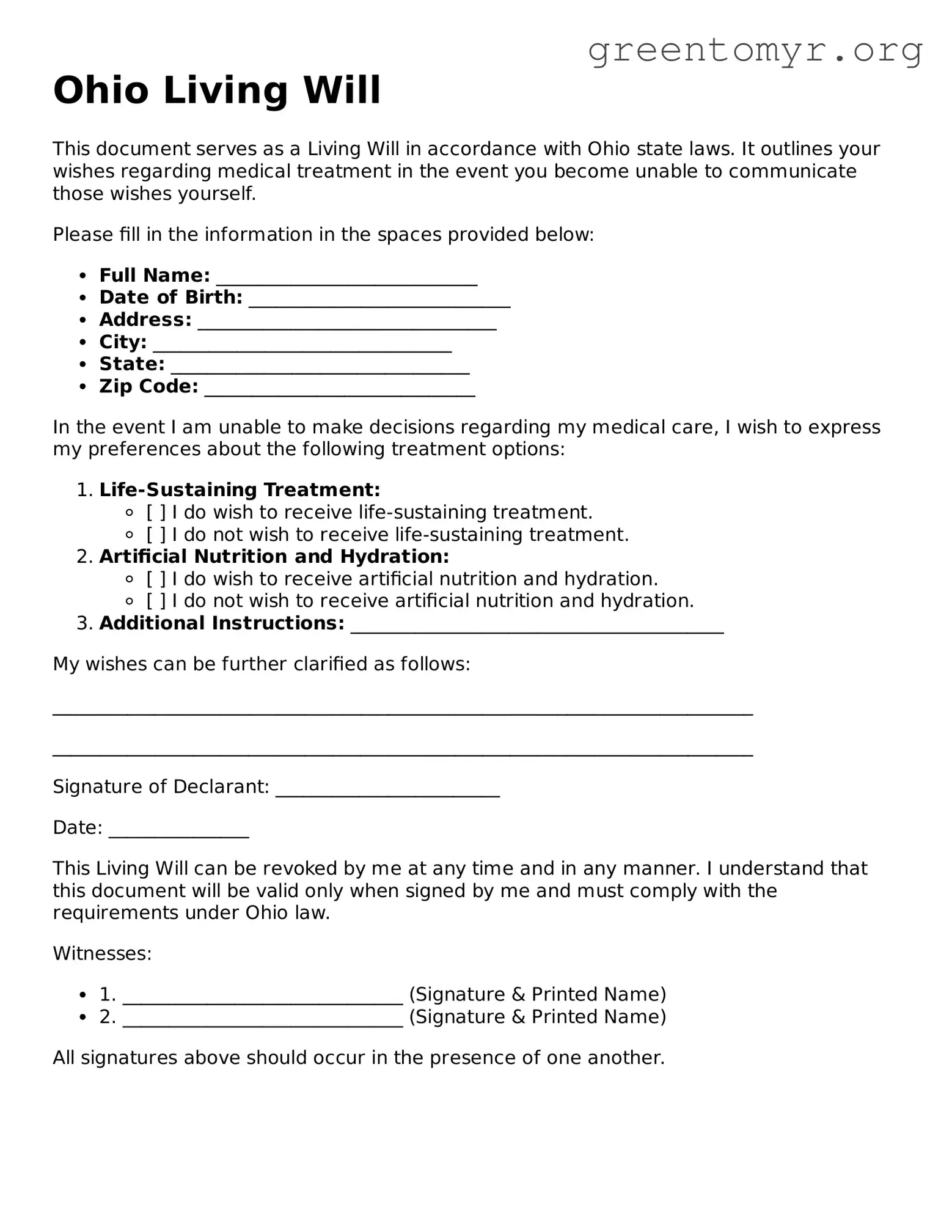Ohio Living Will
This document serves as a Living Will in accordance with Ohio state laws. It outlines your wishes regarding medical treatment in the event you become unable to communicate those wishes yourself.
Please fill in the information in the spaces provided below:
- Full Name: ____________________________
- Date of Birth: ____________________________
- Address: ________________________________
- City: ________________________________
- State: ________________________________
- Zip Code: _____________________________
In the event I am unable to make decisions regarding my medical care, I wish to express my preferences about the following treatment options:
- Life-Sustaining Treatment:
- [ ] I do wish to receive life-sustaining treatment.
- [ ] I do not wish to receive life-sustaining treatment.
- Artificial Nutrition and Hydration:
- [ ] I do wish to receive artificial nutrition and hydration.
- [ ] I do not wish to receive artificial nutrition and hydration.
- Additional Instructions: ________________________________________
My wishes can be further clarified as follows:
___________________________________________________________________________
___________________________________________________________________________
Signature of Declarant: ________________________
Date: _______________
This Living Will can be revoked by me at any time and in any manner. I understand that this document will be valid only when signed by me and must comply with the requirements under Ohio law.
Witnesses:
- 1. ______________________________ (Signature & Printed Name)
- 2. ______________________________ (Signature & Printed Name)
All signatures above should occur in the presence of one another.
